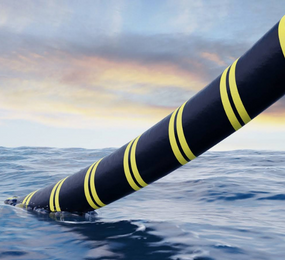Approximately 70 million metric tons of hydrogen are produced globally every year and used in food processing, steel manufacturing, oil refining, chemical and fertilizer production, etc. It’s a very versatile energy source that can be used in liquid or gas form and produced in numerous ways. According to the nomenclature used by market research firm Wood Mackenzie, most of the gas that is used as an industrial chemical is either brown gas, if it is made through the gasification of lignite or coal; or gray gas, if it is made through steam methane reformation, which typically uses natural gas as the feedstock. Both these processes are known to not be carbon-friendly and to release possibly dangerous emissions.
This is in contrast to Green hydrogen which almost fully eliminates emissions by using renewable energy to power the electrolysis of water. It is one of several modern low-carbon fuels that have the potential to replace the fossil hydrocarbons already in use today. Currently, green hydrogen accounts for less than 1 percent of the total annual production of hydrogen. However, WoodMackenzie forecasts predict an output boom in the coming years. In the months leading up to April 2020, the pipeline of green hydrogen electrolyte projects nearly tripled, amounting to 8.2 gigawatts. There is a vast increase in green hydrogen projects with the projection that the average size of electrolyte systems will exceed 600 megawatts by 2027. 
Green hydrogen is the future of energy worldwide.
At least 10 countries have adopted or plan to adopt the gas for future energy security and as a possible export product. In May, Portugal unveiled a national hydrogen strategy estimated to be worth 7.7 million dollars and which is to extend to 2030. Even renewable developers are recognizing the emergence of green hydrogen in the market with firms like Ørsted, the offshore wind leader trumpeting the first major project to exclusively target the transport sector. Several countries have published national hydrogen strategies such as South Korea, Australia, Chile, Spain, Canada, Japan, New Zealand, Germany, etc. In Canada, the energy company Hydro-Québec plans to build one of the world’s first and biggest production facilities for green hydrogen in Varennes, Quebec. The engineering contract for installing the 88 MW water electrolysis plant has been awarded to the green hydrogen product division of thyssenkrupp Uhde Chlorine. The plant is expected to produce more than 11,000 metric tons of green hydrogen annually, and deliver the clean hydrogen to a biofuel plant to produce biofuels from residual waste for the transportation sector. 
Green hydrogen could supply up to 25% of the world’s energy needs by 2050 and become a US$10 trillion addressable market by 2050. Investment in green hydrogen production is set to exceed a billion dollars a year by 2023 as the costs of both renewable power and electrolyzer technology fall and governments introduce supportive policies to aid the development of hydrogen energy. It is only a matter of time before the rest of the world and stakeholders in the energy industry realize that green hydrogen is the future of energy and transition their activities to utilize it.
At the virtual Floating Solar PV Forum, Nicolas Chouleur will unravel the role of Green Hydrogen in the future of renewable energy. Nicolas is a Partner at Everoze Partners Ltd and he’d be joined by other experts and stakeholders in discussions that could shape the future of the global solar energy market.
















